Stacy Levy: BLue Lake
|
April 1–June 10, 2005  Students who assisted Stacy Levy with the Blue Lake Installation Stacy Levy typically focuses on themes such as water, wind, tides, pollution, and decay; her works tell the stories of specific sites and their intersection of ecological and cultural influences. Her Lafayette installation, a project she has had in mind for several years, is a departure. Blue Lake was not a representation of an existing lake, nor did it use materials from an existing body of water. Using 3,000 waist-high steel rods, blue vinyl discs, and a particleboard floor—not unlike some materials used in Urban Oldfield, 1998, at the Institute of Contemporary Art, ICA, Philadelphia, where she created a full-scale “diagram” of what plant life would have existed on the lot if the ICA had not been built—she created a shimmery blue lake that invites visitors interaction. Kathy Bruce, author of the catalogue essay on Levy’s Blue Lake, writes [Levy’s work] brings to our attention the invisible, giving form to the natural resources in the world around us. She presents visual scientific concepts to be absorbed intellectually, visually, and poetically without moralizing. Blue Lake is her most psychological installation to date for it requires the viewer to activate the piece both physically—by moving through the space of waist deep undulating blue discs and psychologically by asking them to engage their perceptions through the use of visual memory. In this respect, Blue Lake evokes the natural world rather than explains it and therein lies its mystery. Levy describes her installation, ‘like a mirage representing a longing for water, and the absence of a perfect blue lake in our landscape.’ In keeping with Lucy Lippard’s notion that ‘One of arts function is to recall that which is absent-whether as history, or the unconscious form or social justice.’ Levy creates a sense of undisturbed beauty, of unmanipulated science and by so doing, shows us the crucial necessity to put our relationship to nature in order. Blue Lake could be viewed as a refuge for the modern spirit; a return to the simplicity of Nature and the antithesis to our chaotic, destructive concrete modernity. 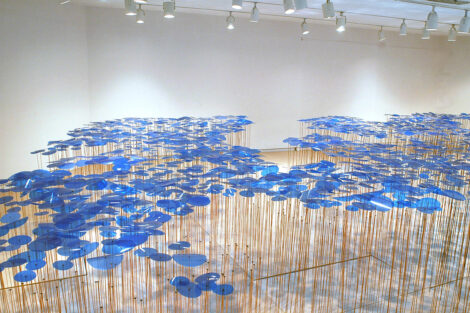 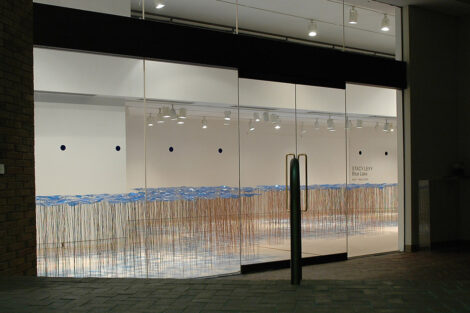 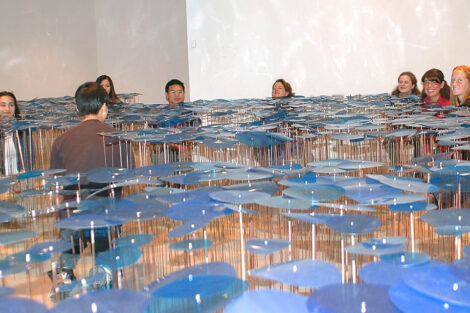 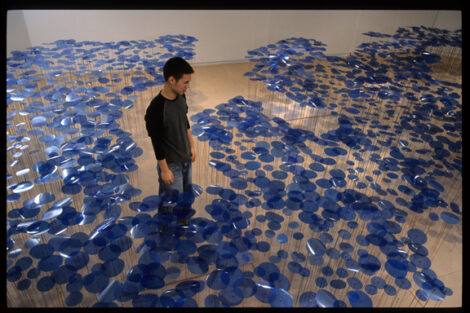 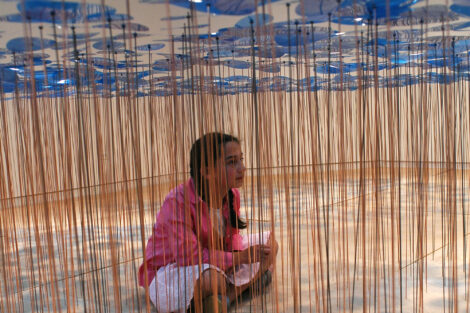 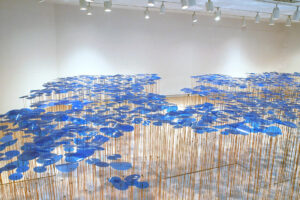 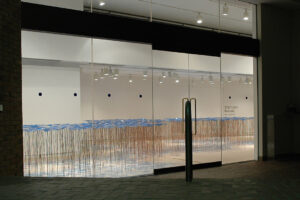 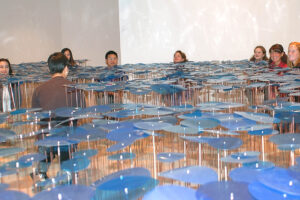 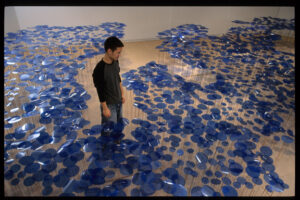 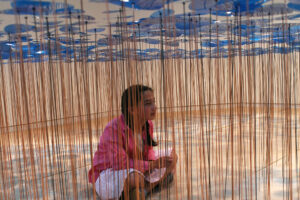 Levy, who has an MFA in sculpture from Tyler School of Art at Temple University, combines art, science in her work. She minored in forestry as an undergraduate sculpture major at Yale and is trained in environmental science and landscape architecture. Water—whether rain, river, or lake—has long been an important element in her work. She collected water from the Delaware, Schuylkill, and Cooper Rivers and 39 tributaries to create Watercourse, 1996, an installation at University of the Arts, Philadelphia. Eight thousand clear plastic cups on the gallery floor, in three different sizes, mapped the Delaware River and its tributaries to-scale. The cups’ sizes indicated rivers, creeks, or streams, and were filled with water from corresponding bodies of water. Empty cups represented creeks that no longer existed. As water evaporated and was refilled, different-colored residue was left behind—visual evidence of algae and other organisms in the water. Many thanks to those who worked on the installation including Stacy’s assistant Danielle Jones, Lafayette students Amanda Bochner ’05, Charles Felix ’08, Lai Huang ’07, Charles Jun ’08, Taryn Landers ’05, QiJie Lao ’08, Vanessa Araujo-Lopera ’08, and Lindsay O’Connor ’08; Mario Cozzubbo, Steve Kauth, Ron Morgan, and Mike Breiner of the College’s plant operations; and Kathy Bruce, author of the essay on Levy’s Blue Lake.
If you would like to receive a copy of the illustrated catalogue with essay by Kathy Bruce, please contact the Williams Center Gallery at artgallery@lafayette.edu. |
||
 |
||